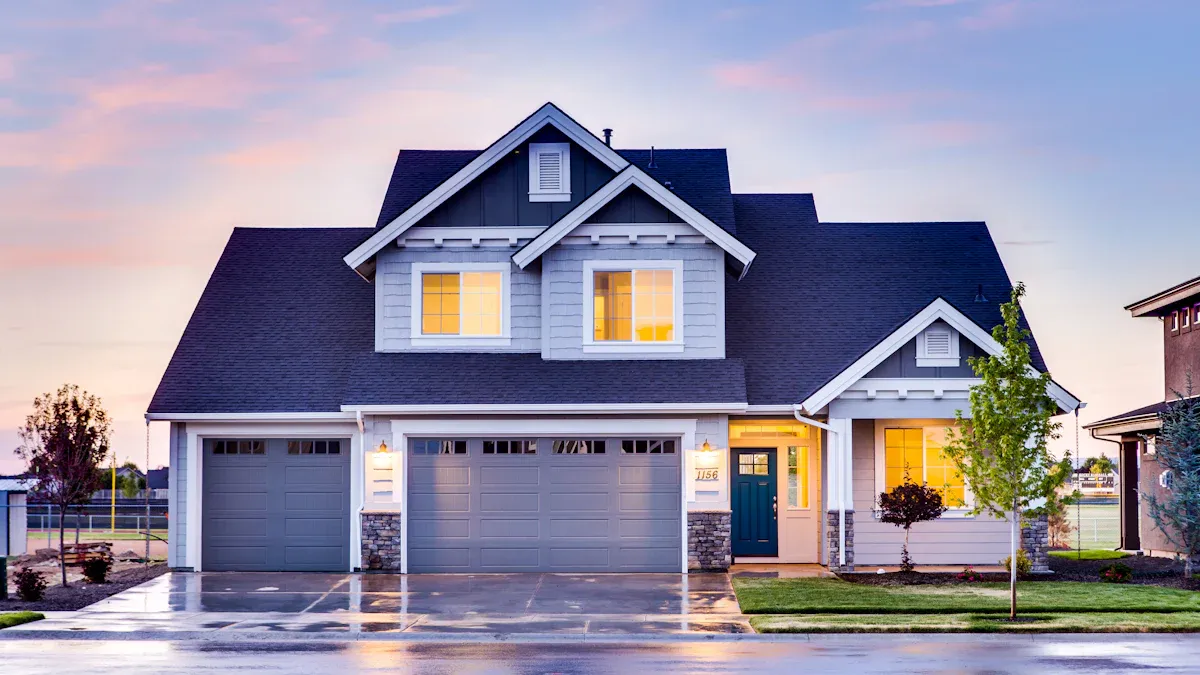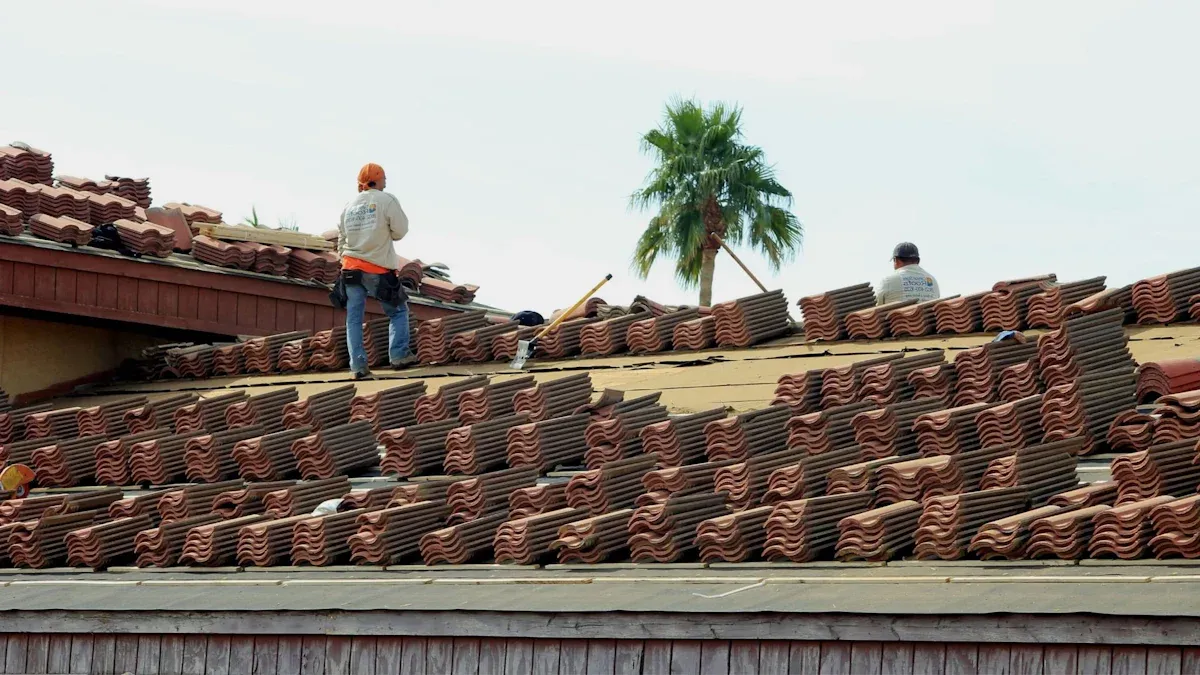
You may wonder, is your roof fully covered? what sc homeowners need to know about acv vs. rcv can affect your peace of mind. Your policy might use ACV or RCV. Homeowners in South Carolina face new trends. Many now see their policy shift, changing roof coverage and financial impact.
Key Takeaways
Replacement cost coverage pays for a brand new roof. It does not take away money because of the roof’s age. Actual cash value coverage gives you less money. It takes away money for how old your roof is. This means you might have to pay more yourself.
Roof age is important. Roofs older than 15 to 20 years often get only actual cash value coverage. This means you get less money from insurance after damage. You will have to pay more from your own pocket.
Check your insurance policy often. Take good care of your roof. This helps you keep better coverage. It also helps you avoid surprise costs. Local experts like GSP Insurance Group can help you. They can help you find the best protection.
ACV vs. RCV: Roof Coverage Basics

What Is Actual Cash Value?
When you ask your insurance for help with roof damage, they might use actual cash value. This means they look at how old your roof is and what shape it is in. They also check what kind of material your roof has. The insurance company takes away money for how much your roof has worn down. They figure out how much it would cost to get a new roof today, then subtract the depreciation. If your roof is old or has damage from use, you will get less money. For example, if your roof is 15 years old and a storm hits, actual cash value might not cover everything. You could end up paying a lot of money yourself. Many insurance companies in coastal South Carolina now use actual cash value for older roofs. This is happening more after recent storms.
What Is Replacement Cost?
Replacement cost coverage pays for you to get a new roof with similar materials. The insurance company does not take away money for depreciation. You only have to pay your deductible. This means you can get a new roof after something happens, even if your old roof was very old. Replacement cost coverage gives you better protection. It helps you avoid big surprise bills.
Tip: Always look at your policy to see if your roof is covered by replacement cost or actual cash value. The difference between acv and replacement cost can be thousands of dollars when you need a new roof.
Aspect | Replacement Cost Value (RCV) | Actual Cash Value (ACV) |
|---|---|---|
Definition | Pays full cost to repair or replace roof without deducting depreciation | Pays cost to repair or replace roof minus depreciation |
Depreciation | Not deducted | Deducted, reducing payout |
Payout Amount | Full replacement cost (minus deductible) | Lower payout reflecting current roof value |
Premium Cost | Higher premiums | Lower premiums, higher out-of-pocket costs |
Knowing the difference between acv and replacement cost helps you make smart choices for your home. If you want to check your coverage or get a quote, contact GSP Insurance Group for local help.
Is Your Roof Fully Covered? What SC Homeowners Need to Know
If you ask, “is your roof fully covered? what sc homeowners need to know about acv vs. rcv,” you want simple answers. Many people in Beaufort County and the South Carolina Lowcountry see new insurance changes. More companies now use actual cash value (ACV) instead of replacement cost value (RCV) for roof coverage. This switch can make you pay more money after a storm or accident. Knowing your policy is the first step to keep your home and wallet safe.
Policy Types in South Carolina
There are different insurance policies for roofs in South Carolina. Each one gives a different amount of coverage. The most common are replacement cost coverage and actual cash value coverage. Replacement cost coverage pays for a new roof with similar materials. It does not take away money for age or wear. Actual cash value coverage pays only what your roof is worth now, after taking away depreciation. If your roof is old, you get less money.
Insurance companies also have policies that cover certain dangers or all dangers except those listed as exclusions. Named-peril policies only cover things listed in the policy, like fire or wind. All-risk (open peril) policies cover everything except what is not included.
Here is a table that shows common roof insurance coverage types in South Carolina:
Coverage Type | Description |
|---|---|
Storm Damage | Covers wind and hail, which are common in South Carolina. |
Fire-Related Damages | Pays for roof damage from fire. |
Falling Objects | Covers damage from falling trees or debris during storms. |
Accidental Damage | Pays for sudden, unexpected harm to the roof. |
Replacement Cost Coverage | Pays the full cost to replace your roof, not just its current value. |
Endorsements (Optional) | Adds extra protection, such as flood or mold coverage. |
Hurricane-Specific Coverage | Includes emergency repairs and debris removal after hurricanes. |
Exclusions | Lists what is not covered, like neglect or normal wear and tear. |
Note: Many insurance companies in South Carolina now limit replacement cost coverage for roofs older than 15-20 years. If your roof is old, your policy may only pay actual cash value. This means you pay more yourself.
Covered Perils and Exclusions
You should know what your insurance covers and what it does not. Most policies protect you from sudden events, but not everything. Here are some common covered perils and exclusions in South Carolina:
Covered Perils:
Storms, wind, and hail
Fire and lightning
Vandalism and theft
Falling trees or debris
Weight of ice, snow, or sleet
Common Exclusions:
Normal wear and tear or roof getting old
Damage from not taking care of your roof
Flood and earthquake damage (unless you buy extra coverage)
Termite and pest damage
Damage from war or civil unrest
Impact of Roof Age:
Newer roofs are more likely to get full coverage.
Roofs over 15-20 years old may only get ACV or may not be covered.
Insurance companies often want regular inspections and proof of care, especially for older roofs.
Policy Types:
All-perils policies cover most natural disasters except those listed as exclusions.
Named-perils policies only cover events named in the policy.
Other Considerations:
You should keep good records and inspection reports for your roof.
Repairs by unlicensed workers may make your coverage not work.
When you look at your homeowners insurance policy, find the part about roof coverage. Check if your policy uses ACV or RCV. If you see more exclusions or limits for older roofs, you may have to pay more after a storm. Insurance companies in South Carolina are making stricter rules and using more ACV policies, especially near the coast. This makes it even more important to know your policy details.
If you are not sure about your coverage or want to make sure your roof is fully protected, contact GSP Insurance Group. A local expert can help you check your insurance policy and find the best choices for your home.
Coverage Comparison: ACV vs. Replacement Cost
Claim Payouts
When you make a claim for roof damage, your coverage type matters a lot. In South Carolina, many companies use actual cash value for older roofs, especially near the coast. This means the company checks your roof’s age and condition. They subtract depreciation from the replacement cost. You only get paid for what your roof is worth now. You do not get the full amount to buy a new roof.
Let’s look at two examples to see how this works:
Policy Type | Roof Replacement Cost | Depreciation Deducted | Payout Amount |
|---|---|---|---|
$10,000 | $3,000 | $7,000 minus deductible | |
RCV (Replacement Cost) | $10,000 | $0 | $10,000 minus deductible |
If you have a replacement cost policy, your claim pays for a new roof with similar materials. You only pay your deductible. If you have an actual cash value policy, the company takes away money for age and wear. You get less money and must pay more yourself.
Note: Depreciation can take away thousands from your claim payout, especially if your roof is over 10 years old.
Here is another real-life scenario:
Scenario | Roof Damage Cost | ACV Payout | RCV Payout Description | |
|---|---|---|---|---|
$15,000 | $15,000 – $10,000 depreciation – $1,000 deductible | $4,000 | Full replacement cost covered, no depreciation deducted | |
10-Year-Old Roof Example | $15,000 | 50% depreciation applied, minus deductible | ~$7,500 – deductible | Initial ACV payout, plus recoverable depreciation after repair, resulting in full coverage |
With an ACV policy, your payout goes down as your roof gets older. The replacement cost policy always covers the full amount, minus your deductible.
Out-of-Pocket Costs
How much you pay depends on your insurance coverage. With ACV, you pay more because the company only pays the depreciated value. With replacement cost, you pay less because the claim covers the full cost to replace your roof.
Feature | ACV Policy | RCV Policy |
|---|---|---|
Payout calculation | Depreciated value minus deductible | Full replacement cost minus deductible |
Example payout (hail damage) | $4,000 (after depreciation and deductible) | $9,000 (replacement cost $10,000 minus $1,000 deductible) |
Premium cost | Lower premiums | Higher premiums (about 20% more) |
Out-of-pocket costs | Higher, due to depreciation and deductibles | Lower, typically just deductible |
Financial protection | Less comprehensive, more risk of large expenses | More comprehensive, better financial security |
Suitability | Budget-conscious homeowners with emergency funds | Homeowners seeking full coverage and peace of mind |
Homeowners in Beaufort County and the South Carolina Lowcountry often pay more out of pocket with ACV policies. If your roof is old, the claim payout may not cover a full replacement. You might have to pay thousands yourself. Replacement cost coverage gives you better protection, especially after a big storm.
With an ACV policy:
The payout is based on your roof’s depreciated value.
You get a lower payout for older roofs.
You must pay the rest of the replacement cost yourself.
With a replacement cost policy:
The claim pays for the full cost to replace your roof.
You only pay your deductible.
You have better peace of mind after roof damage.
🏠 Tip: Check your insurance policy every year. If you want to avoid big out-of-pocket costs after roof damage, ask your agent about replacement cost coverage. GSP Insurance Group can help you find the best coverage for your home.
Roof Age & Eligibility for Replacement Cost
Age Limits and Material Requirements
How old your roof is can change your coverage. In South Carolina, many companies only give actual cash value if your roof is 15 years old or more. If your roof is newer, you might get replacement cost coverage. The kind of roof you have matters too. Shingle roofs are common but can get damaged easily. Metal roofs last longer and do not break as fast. But fixing metal roofs can be hard and may need whole panels replaced. If your roof has materials that are not made anymore, insurance may pay for a full new roof. This helps stop leaks from repairs that do not match.
Factor | |
|---|---|
Shingle Roofs | Easier to repair, but more damage means higher chance of full replacement approval. |
Metal Roofs | Harder to repair, may need full panel replacement for coverage. |
Old Roofs | Often only qualify for ACV, not RCV. |
Discontinued Materials | Usually leads to full roof replacement approval. |
Maintenance Practices | Well-maintained roofs keep eligibility for better coverage. Poor care can limit your options. |
🛠️ Tip: Get your roof checked and fixed often. This helps you keep better coverage and might make your premiums lower.
Insuring to Value
To keep replacement cost coverage, you must insure your roof for at least 80% of what it costs to replace. This is called the 80% rule. If a new roof costs $300,000, your policy should cover at least $240,000. If you insure for less, the company may only pay part of your claim. For example, if you insure for just 60%, you might only get 75% of your claim paid. You would have to pay the rest yourself. This rule helps you avoid big bills and makes sure you get full coverage when you need it.
If you do not know your roof’s value or coverage, talk to GSP Insurance Group. A local expert can help you check your policy and make sure your home is safe.
Trends in South Carolina Roof Insurance
Shift Toward ACV Policies
More insurance companies in South Carolina now use actual cash value for roof insurance. This is happening a lot in places near the coast, like Beaufort County. Companies want to lower their costs from wind and hail damage. They use ACV so they can take away money for how old your roof is. They also subtract money for labor and materials. If your roof is old, you will get less money if it is damaged.
Many companies use scheduled roof depreciation, which works like ACV for older roofs.
The South Carolina Supreme Court says insurers can subtract money for both labor and materials.
Some companies say ACV policies have lower premiums, but you pay more if you need a new roof.
Homeowners with older roofs or less money feel this change the most, because ACV can mean paying thousands more.
If your roof is 15 years old and a storm hits, your insurance may only pay a small part of the cost to replace it. You will have to pay the rest yourself.
Tip: Look for roof insurance that still gives replacement cost coverage if you want better protection.
Local Weather Risks
Living near the coast means your roof faces more danger. Hurricanes and big storms often damage roofs in South Carolina. Insurance companies know this and change their roof insurance choices. Regular homeowners insurance covers windstorm damage, but not flooding. You need a different flood insurance policy for water from storm surge.
Insurers often add special hurricane or windstorm deductibles. These are a percent of your home’s value, so you might pay a lot.
South Carolina is one of the top states for high home insurance costs because of many storms.
Companies may ask you to add wind protection to your roof. These upgrades can help you save money on your insurance.
When a storm is coming, insurers sometimes stop selling new roof insurance or making changes. This makes it hard to get coverage at the last minute.
You can get ready by keeping your roof in good shape and checking your insurance every year. If you want to make sure your roof is fully covered, contact GSP Insurance Group for a review or quote.
Protecting Your Roof: Steps for Homeowners

Reviewing Your Policy
You should look at your insurance policy every year. This helps you know if your roof coverage is right for you. If you fix up your house or your roof gets older, your needs may change. Check if your policy uses actual cash value or replacement cost value. Look for any rules about your roof’s age or what it is made of. If you see changes or do not get something, talk to a local insurance expert. Keeping your policy current helps you avoid surprises when you file a claim.
Tip: Tell your insurance company after repairs or upgrades. This keeps your coverage correct.
Upgrades and Maintenance
Taking care of your roof helps it last longer and can get you better insurance. Here are some things you can do:
Get your roof checked once a year to find small problems.
Clean your gutters so water does not cause leaks.
Cut back trees near your roof to stop branch damage.
Use strong materials when you fix or replace your roof.
Keep records of all checks and repairs for your insurance claim.
If you use tough materials and follow building codes, you might pay less for insurance. Some companies give discounts for these upgrades.
When to Contact an Expert
Call a licensed insurance expert if you see roof damage or plan big repairs. Experts help you understand your policy and guide you through claims. They make sure you get fair treatment. If you need to file a claim after a storm or accident, call your insurance company fast. Acting quickly helps you avoid delays and makes sure repairs are covered.
For a review of your roof coverage, contact GSP Insurance Group. Local experts can help you protect your home and get ready for future roof repairs or replacement.
If you know if your roof has ACV or RCV, you can plan repairs. This helps you avoid big bills later. Look at your policy and see if anything is missing. Ask a local expert if you have questions. Getting your insurance checked just for you keeps it current. Take steps now to keep your home safe and stop expensive surprises.
FAQ
What is the main difference between ACV and RCV roof coverage?
You get full replacement cost with RCV. ACV pays less because it subtracts for age and wear. RCV gives you better protection after roof damage.
Why are more South Carolina insurers switching to ACV for roofs?
Many storms and older roofs increase costs for insurers. Companies now use ACV more often, especially near the coast. This helps them lower claim payouts.
How can you keep better roof coverage in Beaufort County?
Keep your roof in good shape. Use strong materials. Review your policy every year.
Contact GSP Insurance Group for a free policy review or quote.
